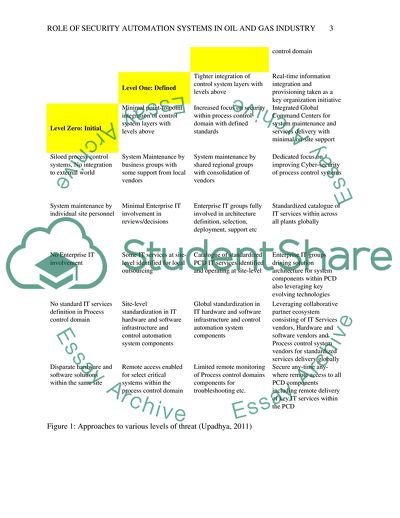Cite this document
(Role of Security Automation Systems in Oil and Gas Industry Literature review Example | Topics and Well Written Essays - 2000 words, n.d.)
Role of Security Automation Systems in Oil and Gas Industry Literature review Example | Topics and Well Written Essays - 2000 words. https://studentshare.org/information-technology/1840975-what-is-the-key-role-of-security-automation-systems-in-securing-data-in-oil-and-gas-industry
Role of Security Automation Systems in Oil and Gas Industry Literature review Example | Topics and Well Written Essays - 2000 words. https://studentshare.org/information-technology/1840975-what-is-the-key-role-of-security-automation-systems-in-securing-data-in-oil-and-gas-industry
(Role of Security Automation Systems in Oil and Gas Industry Literature Review Example | Topics and Well Written Essays - 2000 Words)
Role of Security Automation Systems in Oil and Gas Industry Literature Review Example | Topics and Well Written Essays - 2000 Words. https://studentshare.org/information-technology/1840975-what-is-the-key-role-of-security-automation-systems-in-securing-data-in-oil-and-gas-industry.
Role of Security Automation Systems in Oil and Gas Industry Literature Review Example | Topics and Well Written Essays - 2000 Words. https://studentshare.org/information-technology/1840975-what-is-the-key-role-of-security-automation-systems-in-securing-data-in-oil-and-gas-industry.
“Role of Security Automation Systems in Oil and Gas Industry Literature Review Example | Topics and Well Written Essays - 2000 Words”. https://studentshare.org/information-technology/1840975-what-is-the-key-role-of-security-automation-systems-in-securing-data-in-oil-and-gas-industry.


